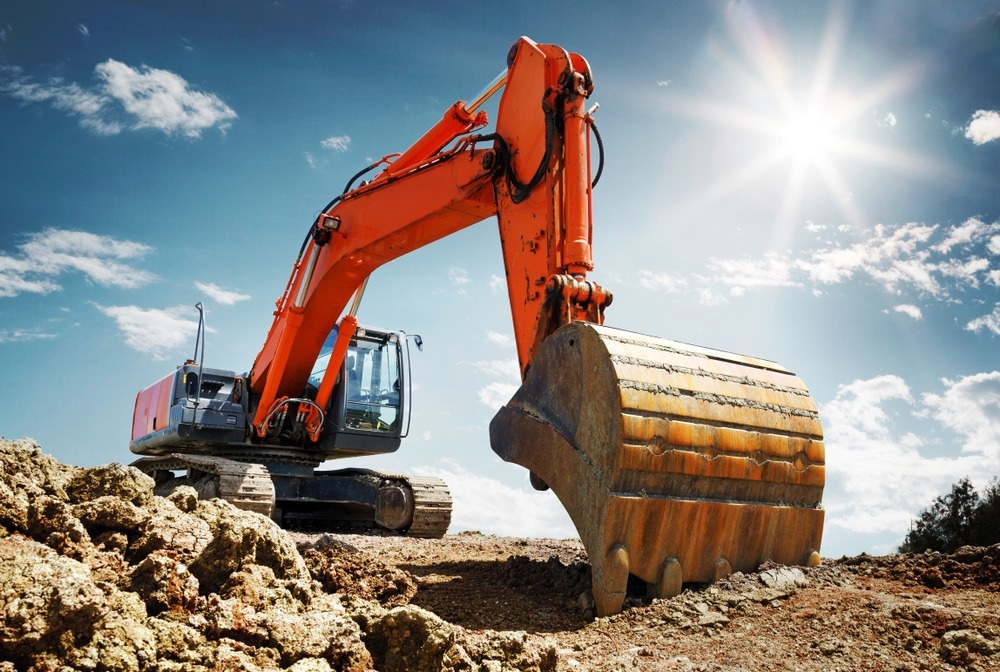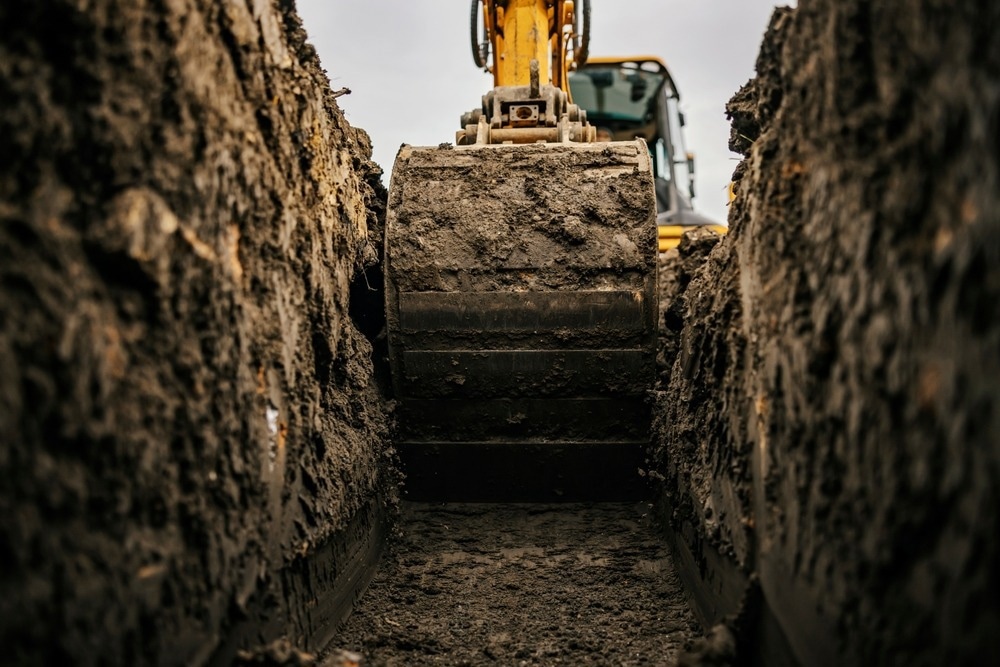Robotics has revolutionized several heavy industries, with automation helping to accelerate technological and economic progress worldwide. Autonomous excavators are one technology in the field of robotics that promise to innovate sectors such as construction in the coming years.

Image Credit: Petair/Shutterstock.com
What are Autonomous Excavators?
Automated driving technologies have become a hot topic over the past few years, with the promise of improving road safety. Road traffic accidents are one of the main killers in many countries, and autonomous vehicles, while highly challenging to realize, could reduce them to near zero.
Another area where safety is a paramount concern is construction, with the construction industry investing heavily in processes and technologies to prevent potentially fatal workplace incidents. In the US alone, the construction industry was responsible for 1 in 5 workplace deaths in 2021.
Autonomous excavators are one of the emerging technologies in the construction sector that could improve safety and productivity. These self-driving vehicles use sensors to collect information on their surroundings and make decisions based on this data.
Autonomous excavators can perform heavy duties on-site without the need for any human intervention, also being able to operate around the clock, thereby improving efficiency. They utilize a suite of technologies such as sensors, cameras, LiDAR, GPS, artificial intelligence, and machine learning.
What are the Challenges Involved With Autonomous Excavators?
Autonomous excavators are still in their infancy, with large-scale implementation of the technology on construction sites some years away. Caterpillar, the largest supplier of construction equipment worldwide, has deep experience in the AI and robotics sector, but automated excavators are yet to be commercialized by the company.
Caterpillar is a good example of the challenges autonomous excavators face with commercialization: the company has been operating in the autonomous vehicle ecosystem since the 1990s, with nearly 600 autonomous Caterpillar trucks operating in mines globally.
A key challenge with autonomous excavators is the dynamic nature of construction sites: compared to self-driving vehicles, which travel on slow-changing, well-mapped roads, autonomous construction vehicles have to cope with a rapidly changing environment.
This presents the designers of autonomous excavators with a technological challenge, as advanced sensors and machine learning algorithms need to be developed to ensure that they can operate safely within this dynamic environment. This takes time and financial investment.
Aside from the technical challenges involved with realizing the potential of autonomous excavators, roadblocks exist in general with the uptake of new technologies in sectors such as construction. The cost of autonomous plant machinery may be unattractive in a sector with tight economic margins.

Image Credit: Dusan Petkovic/Shutterstock.com
What Companies are Involved in Autonomous Excavator Research?
Leading innovators in the autonomous excavator space include the aforementioned Caterpillar, Doosan, Husqvarna, Baidu, CNH Industrial, Komatsu, Built Robotics, Hitachi, Deere, Toro, and Microsoft.
Built Robotics is one of the key players in this research area, being one of the leading patent filers. The company has filed a patent for an excavator that can navigate the complex and dynamic environment of a dig site and carry out excavation routines.
Toro, Husqvarna, and Newmont are leaders in application diversity. Built Robotics and EquipmentShare are two of the leading companies in terms of geographic reach. In terms of patent filing, aside from Built Robotics Komatsu, Caterpillar, Kobe Steel, and Deere are leading the way.
Case Study: Construction of Dry Stone Walls With Autonomous Excavators
As mentioned in this article, autonomous excavators are still a few years away from full commercialization. Currently, a number of companies are in the prototype stage as the technology matures, with some interesting technology demonstration projects emerging in recent years.
Researchers at ETH Zurich have demonstrated the potential of a new autonomous excavator, known as HEAP, for construction tasks. The excavator was used to construct a 6 x 65-meter drystone wall.
The machine uses onboard sensors to draw a digital map of its surroundings and identify and localize building blocks to construct the wall. Machine vision and proprietary onboard tools allow HEAP to identify, scan, and collect stones and blocks suitable for its task from its immediate vicinity.
As well as identifying their size and shape, HEAP’s suite of technologies can register approximate weight and center of gravity, with proprietary algorithms determining the best place for each building block. Twenty to thirty stones can be placed in a single consignment, making this system highly efficient.
Conclusion
Autonomous excavators can significantly improve safety, productivity, and efficiency on a construction site, but full commercialization is still some way off. There are still some key challenges to overcome in this field, but the increase in research interest over recent years attests to the importance of this robotic technology in the industry.
Automation is one of the key target research areas in heavy industry at the moment, with autonomous haulage trucks already in use in mines and quarries across the world. These travel on well-defined roads: autonomous excavators would have to deal with the more dynamic surroundings of construction sites.
This innovative area of robotics could revolutionize the construction industry, but first, key technical and economic challenges must be overcome. While some human operators would still be needed, it is clear that the future of the sector lies in automation rather than the human worker-centric working systems in place today.
References and Further Reading
GlobalData (2023) Robotics: who are the leaders in autonomous excavators for the construction industry? [online] worldconstructionnetwork.com. Available at: https://www.worldconstructionnetwork.com/data-insights/innovators-autonomous-excavator-construction/
Johns, R., et al. (2023). A framework for robotic excavation and dry stone construction using on-site materials Science Robotics, Vol. 8 No. 84 [online] science.org. Available at: https://www.science.org/doi/10.1126/scirobotics.abp9758
Johnson, K. (2023). The Elusive Dream of Fully Autonomous Construction Vehicles [online] wired.com. Available at: https://www.wired.com/story/the-elusive-dream-of-fully-autonomous-construction-vehicles/
Disclaimer: The views expressed here are those of the author expressed in their private capacity and do not necessarily represent the views of AZoM.com Limited T/A AZoNetwork the owner and operator of this website. This disclaimer forms part of the Terms and conditions of use of this website.